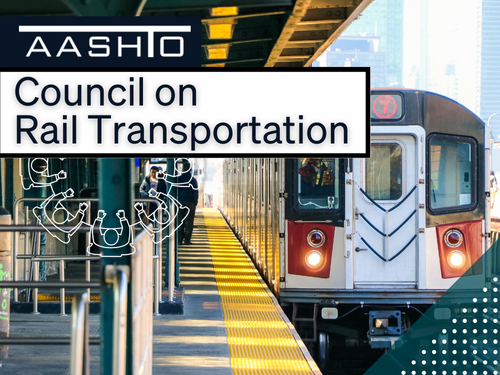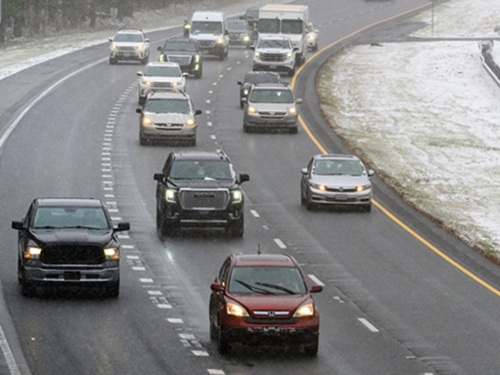Across the country, state departments of transportation are engaging in a wide range of efforts to promote railroad safety as part of the annual Rail Safety Week outreach campaign, held this year across North America September 19-25 and sponsored by Operation Lifesaver Inc., Operation Lifesaver Canada, and the Mexican Association of Railroads.
[Above photo by the Connecticut DOT]
“Rail Safety Week concentrates the public awareness and education campaigns that occur all year long across the country into one jam-packed week. Each day this week, Operation Lifesaver state programs will share rail safety messages in support of our core mission – to save lives,” said Rachel Maleh, executive director of Operation Lifesaver, in a statement.

“Each day focuses on a different audience with customized rail safety messages in support of our core mission – saving lives,” she said. “This annual event brings together Operation Lifesaver state programs, North American safety partners and our partners at the U.S. Department of Transportation along with the many other organizations who share the rail safety message – this week, and all year round.”
Operation Lifesaver noted that 2,100 North Americans die or are seriously injured annually due to unsafe behavior around tracks and trains. As part of Rail Safety week, state DOTs and other organizations issued new video and audio public service announcements as well as social media campaigns. An ongoing safety campaign called #STOPTrackTragedies features videos with the personal stories of people directly affected by rail crossing or trespassing incidents — including victims, friends and family members, locomotive engineers, and first responders.
“I have worked in transportation and on the railroad virtually my whole career. And while we have made great progress in reducing the number of railroad collisions, the fact remains that every three hours in our country, a person or vehicle is hit by a train,” said Joseph Giulietti, commissioner of the Connecticut Department of Transportation, in a statement. “We are working every day with Operation Lifesaver to keep our communities safe.”
The Michigan Department of Transportation is also working to heighten rail safety awareness during Rail Safety Week. “In our distracted society, people may become complacent or might not understand the need for caution near railroad tracks and trains,” the agency said in a statement. “Pedestrians and drivers often simply do not realize that it is dangerous and illegal to walk on railroad tracks, nor how long it takes the average freight train to stop.”
Meanwhile, Operation Lifesaver recently named eight new safety program coordinators for Alaska, the District of Columbia, Florida, Kansas, Louisiana, Maryland, Nebraska and Nevada – bringing the total number of its state programs to 47 states plus Washington, D.C.
The organization, which this year is celebrating the 50th anniversary of its founding in 1972, also recently opened the application period for its competitive Rail Transit Safety Education Grants, which offers a total of $200,000 in funding for transit agencies and government entities that provide transit service to conduct safety education and public awareness initiatives.
In a separate statement, Operation Lifesaver’s Maleh noted that the group caps grant amounts at $20,000 and requires non-federal matching funds of at least 25 percent of project costs. Those projects must focus on safety education or public awareness initiatives in communities with operating or planned rail transit systems – such as commuter rail, light rail, subway, and streetcar systems.
OLI noted October 17 is the deadline for grants applications, with awards announced December 1.
In related news, the Federal Highway Administration recently issued $59 million in grants via its Commuter Authority Rail Safety Improvement or CARSI program to help support five highway-rail crossing projects in California, Florida, New York, and Pennsylvania.
FHWA said in a statement those grants – made in coordination with the Federal Railroad Administration and Federal Transit Administration – would help fund a range of highway-rail crossing improvements, including:
- Adding signal features that will help drivers move away from the track before a train arrives in Ventura County, Southern California;
- Modernizing 25 commuter rail crossings with improved lighting and other safety features in Broward, Miami-Dade, and Palm Beach Counties in Florida;
- Improving accessibility and making warning system upgrades in Dutchess, Nassau, Putnam, and Suffolk Counties in New York; and,
- Installing gates and upgrading pavement markings in communities around Philadelphia.
 Nation
Nation
Registration Open for AASHTO’s Winter Rail Meeting
December 19, 2025 Nation
Nation

